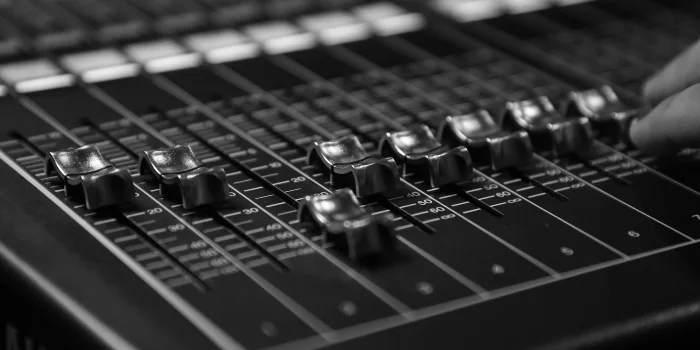There are various concepts and terminology in mixing and one of them is gain staging.
Gain staging is a very important step in mixing but many times it’s skipped by beginner mixing engineers.
If you don’t implement it in your mixing process, then most likely you won’t be able to create a balance in your mix.
So, if you are new to mixing and want to learn more, you must know about gain staging and how it works.
What Is Gain Staging In Mixing
Gain staging in mixing is the process of managing the volume levels of different tracks to ensure a balanced and clear sound. It involves setting the appropriate levels for each individual track so that they work well together and no part of the mix is too loud or too quiet.
It should be the first thing to do when mixing songs because it creates balance and without balance, there will be no good mixes.
Although there are some plugins for gain staging, you can do it without them, by simply using mixer volume faders.
How To Do Gain Staging

The goal of gain staging in mixing is to create balance in the mix by leveling all the tracks properly, with volume faders.
But there are steps you should follow and it concerns the order of tracks you should start and end with.
So, when you finish recording a song, the next step is mixing and it starts with gain staging.
And the first step of gain staging is to bring down all the faders (except the master track) to zero so there would be no sound.
And then you start bringing up levels track by track to create balance in the mix.
Start With Drums
The first instrument to start to gain staging with is the drums because it’s fundamental to every song.
Having a well-balanced foundation for your song is important and very well-balanced drums are the key.
When you mix drums, you implement EQ and compressor but here you need to just balance the volume levels.
Start with a kick drum, then snare drum, toms, hi-hat, and lastly cymbals and room mic tracks. In general, a kick drum volume should be lower than the snare drum.
Tweak until you create a good balance and the drum should sound like a whole instrument.
Level The Bass
After drums, it’s time for bass guitar and this is a very important step because kick drum and bass must glue together.
So, start bringing up the bass track volume and listen carefully to a kick drum. Your bass guitar must add power to the kick drum, so it’s important to match the volume perfectly.
Mixing bass properly with kick drum will give you a good low end which is very important no matter the genre of music. So, make sure that they are glued together.
Continue With Guitars
Next, after you have tweaked the drums and bass, it’s time to bring up the guitars.
Guitars should be as prominent as possible in the mix, especially if it’s a rock or metal song.
So, bring all the main guitar tracks one by one and make sure you can hear them well, but they should not overpower the whole mix.
Because the goal of gain staging is the balance, every track should have its place and must be clearly bearable.
After the main guitar tracks, do the same for other guitar parts and blend them with the mix to your liking.
Also, read more about how to mix metal guitars to know what to do after this stage.
Gain Staging Vocals
Lastly, gain staging ends with vocals – at least this is the way I do it, and works every time.
You might have different vocal tracks such as lead vocals, double vocals, backing vocals, and so on.
Start with a lead vocal track, then blend the double vocal so they glue together, and finally, bring up your backing vocal or vocal harmony tracks.
When you finish it, just listen a couple of times to your mix and adjust anything you don’t like, because once you are done with gain staging, it’s time to start mixing with EQ and compressor.
How Important Is Gain Staging
As you know, a good mix is where every instrument sounds good together, they don’t fight for frequencies, and it has power.
But if there is not a proper balance between tracks, the final sound will not be good and no EQ or compressor tricks will work.
That’s why gain staging is an important step for every mixing project – with it you create a balance and EQing and compressing become much easier and fun to do.
Gain staging must be the first thing to do after recording the whole song – when you have a good balance from the start, you will avoid many beginner mixing mistakes.
Conclusion
Knowing how what is gain staging, how it works, and what to do with it, will help you to become a better and more pro mixing engineer. If you have never tried it, implement it in your demos and get used to it. Once you master it, gaining staging will become one of the most powerful tools.
